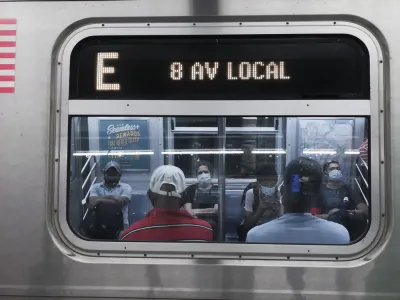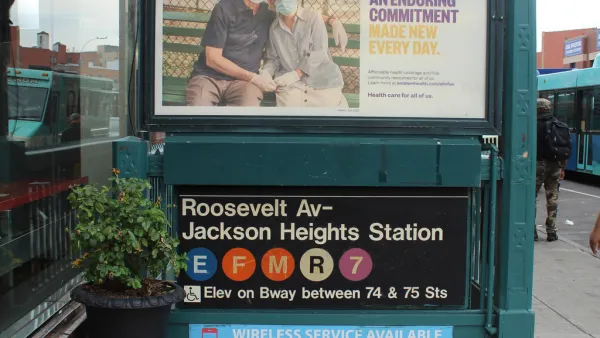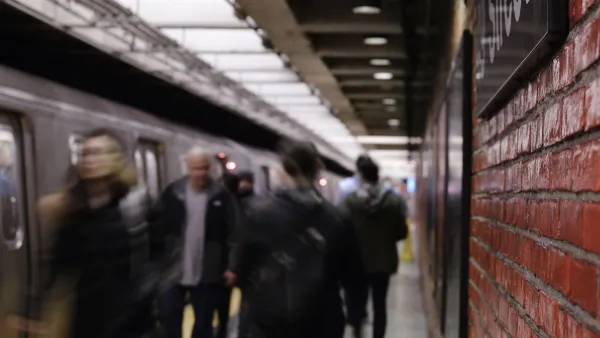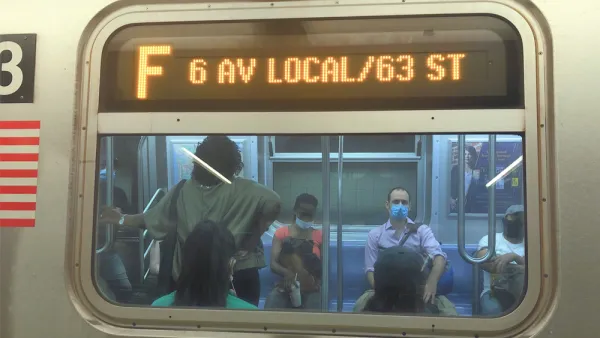Ridership on the New York Subway has a long way to go to return to pre-pandemic normal, and the setbacks of recent months haven't helped the cause.

The New York Times on Sunday published a big feature by Michael Gold, Ana Ley, and James Thomas that digs into the current status of subway ridership around New York City, nearly two years after Covid-19 emerged in its first, brutal wave in the Big Apple and produced one of the first obvious signs of the intersecting concerns of planning and the pandemic.
According to the article, the return of riders to the nation's premier subway system has been uneven depending on location. "Stations in lower-income areas in Brooklyn, Queens and Upper Manhattan, where residents are less likely to be able to work from home and typically depend more on public transit, have rebounded far faster than stations in office-heavy sections of Manhattan, including some that were once the busiest in the system, where many workers are still able to work remotely," write Gold, Ley, and Thomas.
Overall, ridership is still far below pre-pandemic levels. Average daily ridership in November was at 56 percent of pre-pandemic levels—a marked improvement from the 90 percent reduction in trips recorded in spring of 2020, but still far from normal. Recent challenges have worsened ridership—the Omicron variant has sickened Metropolitan Transportation Authority employees, leading to service cuts, and kept more potential riders at home.
"The system is also contending with fears about crime and public safety that were amplified after a woman was shoved to her death in front of a train on Saturday by a man at the Times Square station," according to the article.
Focusing on the varied experiences of the subway in 2022—depending on location and the surrounding economic and demographic factors—the article surveys multiple stations around the system for data and human interest anecdotes. Time lapse video at each station help capture some of the effect in the aggregate.
FULL STORY: Here’s Where Subway Riders Have Returned. And Where They Haven’t.

Analysis: Cybertruck Fatality Rate Far Exceeds That of Ford Pinto
The Tesla Cybertruck was recalled seven times last year.

National Parks Layoffs Will Cause Communities to Lose Billions
Thousands of essential park workers were laid off this week, just before the busy spring break season.

Retro-silient?: America’s First “Eco-burb,” The Woodlands Turns 50
A master-planned community north of Houston offers lessons on green infrastructure and resilient design, but falls short of its founder’s lofty affordability and walkability goals.

Test News Post 1
This is a summary

Analysis: Cybertruck Fatality Rate Far Exceeds That of Ford Pinto
The Tesla Cybertruck was recalled seven times last year.

Test News Headline 46
Test for the image on the front page.
Urban Design for Planners 1: Software Tools
This six-course series explores essential urban design concepts using open source software and equips planners with the tools they need to participate fully in the urban design process.
Planning for Universal Design
Learn the tools for implementing Universal Design in planning regulations.
EMC Planning Group, Inc.
Planetizen
Planetizen
Mpact (formerly Rail~Volution)
Great Falls Development Authority, Inc.
HUDs Office of Policy Development and Research
NYU Wagner Graduate School of Public Service




























